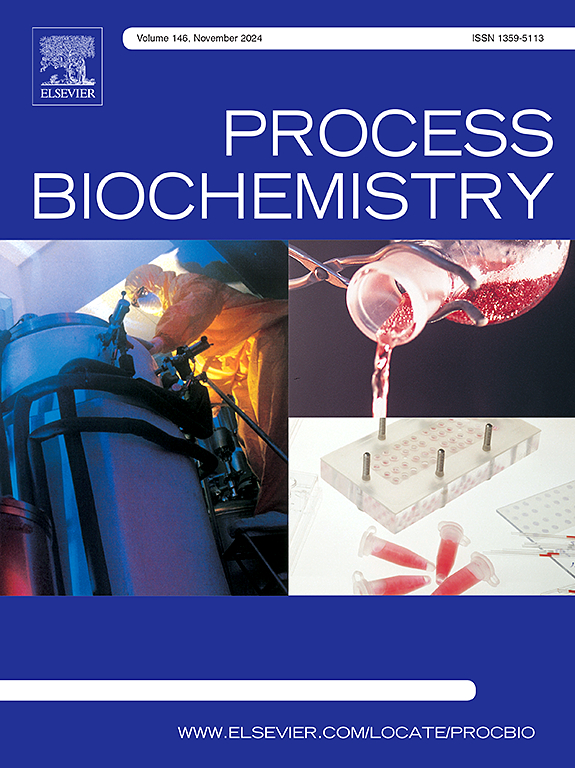Enhancement of gaseous ethyl acetate removal in a new bio-trickling filter by integrating with microbial fuel cell
IF 3.7
3区 生物学
Q2 BIOCHEMISTRY & MOLECULAR BIOLOGY
引用次数: 0
Abstract
Two bio-trickling filters (BTFs) were set up for ethyl acetate removal: one of the filters contained a built-in proton exchange membrane (M-BTF), and the other contained the conventional structure (O-BTF). The comparative results showed that M-BTF had superior biodegradation capacity. Its start-up was relatively faster, and it produced more biomass and exhibited a higher removal efficiency, achieving a maximum removal efficiency difference of 9.9 % than O-BTF. Meanwhile, the maximum output voltage of 536 mV was obtained with the corresponding removal loading of 249.3 g•m−3•h−1. The intermediate product was detected to explore the possible degradation pathway of ethyl acetate, and results showed that the degradation of ethyl acetate was accompanied by the synthesis of long-chain hydrocarbons. The microbial analysis revealed that the anode electrode was highly selective to the bacterial strains, resulting in more electroactive bacteria containing Pseudomonas, Flavobacterium, Pseudoxanthomonas, and Geobacter constructing the microbial community in M-BTF.
求助全文
约1分钟内获得全文
求助全文
来源期刊

Process Biochemistry
生物-工程:化工
CiteScore
8.30
自引率
4.50%
发文量
374
审稿时长
53 days
期刊介绍:
Process Biochemistry is an application-orientated research journal devoted to reporting advances with originality and novelty, in the science and technology of the processes involving bioactive molecules and living organisms. These processes concern the production of useful metabolites or materials, or the removal of toxic compounds using tools and methods of current biology and engineering. Its main areas of interest include novel bioprocesses and enabling technologies (such as nanobiotechnology, tissue engineering, directed evolution, metabolic engineering, systems biology, and synthetic biology) applicable in food (nutraceutical), healthcare (medical, pharmaceutical, cosmetic), energy (biofuels), environmental, and biorefinery industries and their underlying biological and engineering principles.
 求助内容:
求助内容: 应助结果提醒方式:
应助结果提醒方式:


